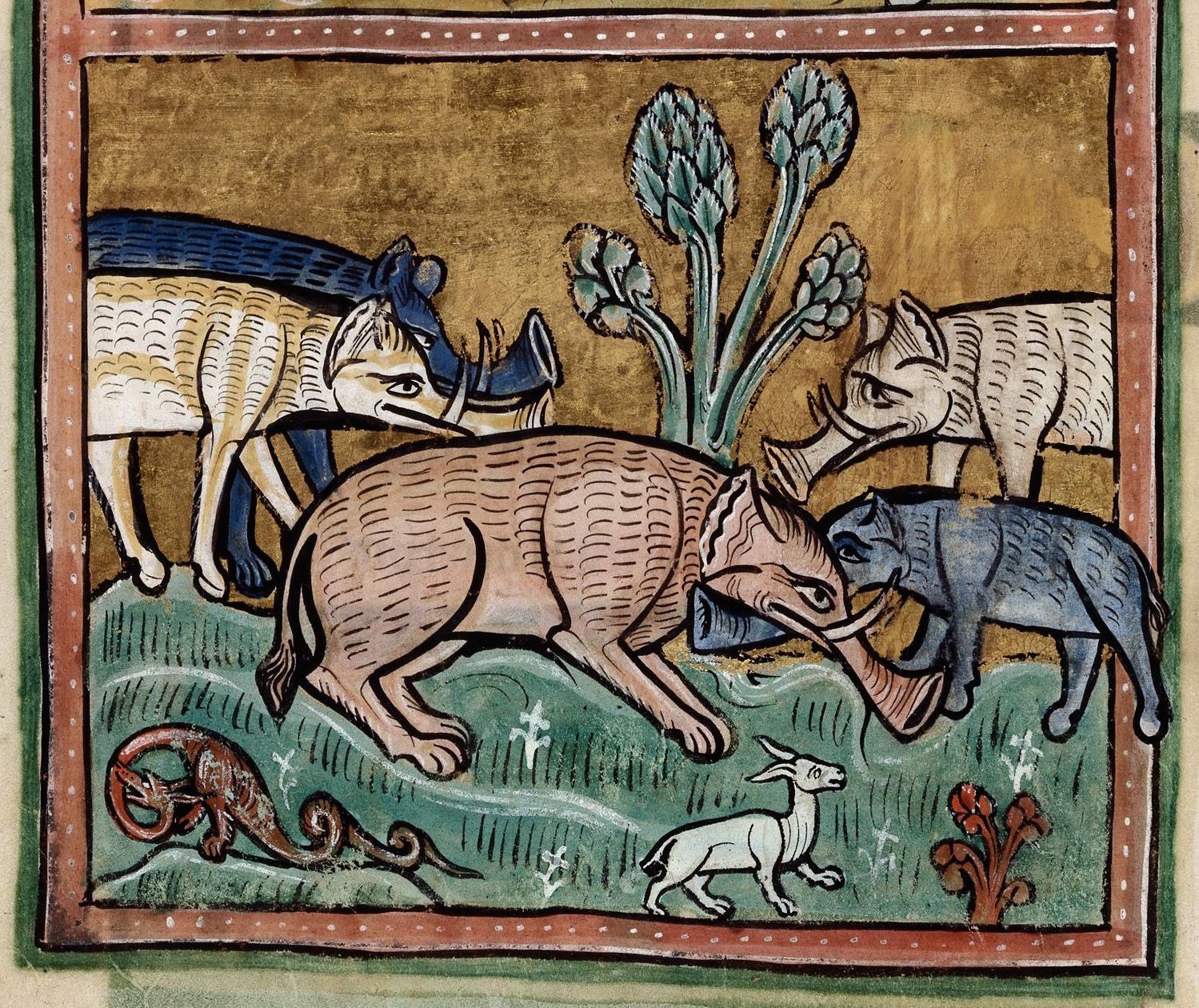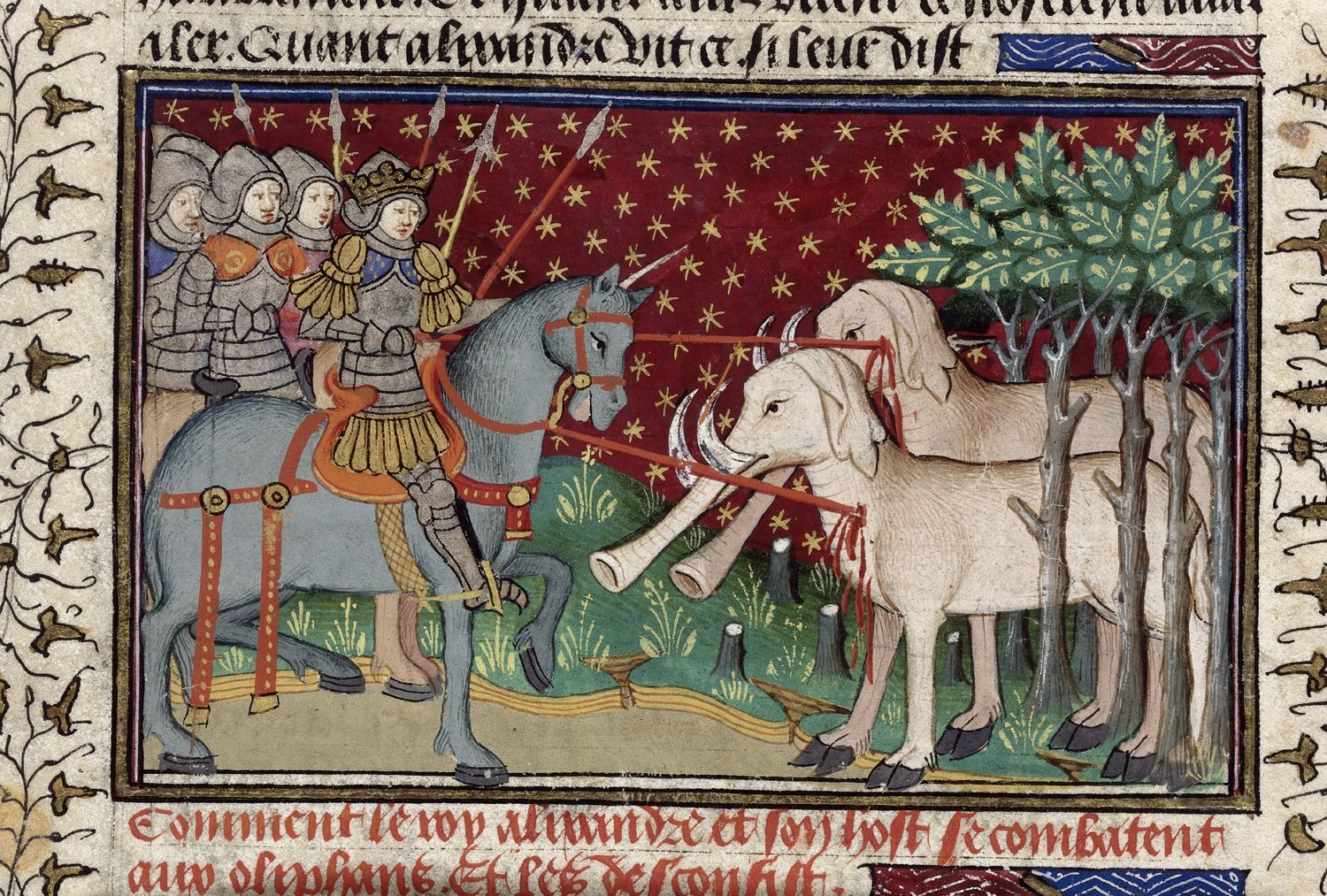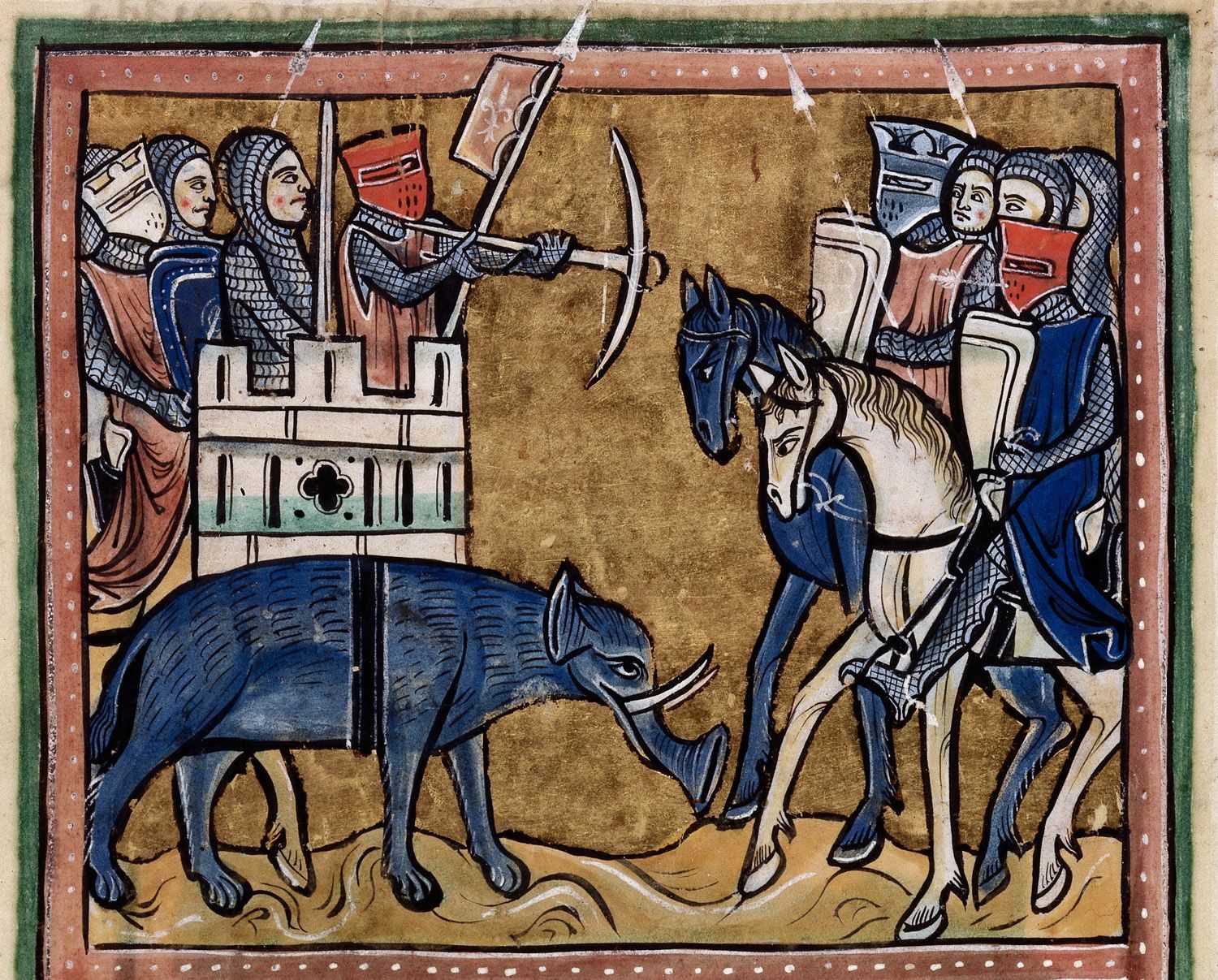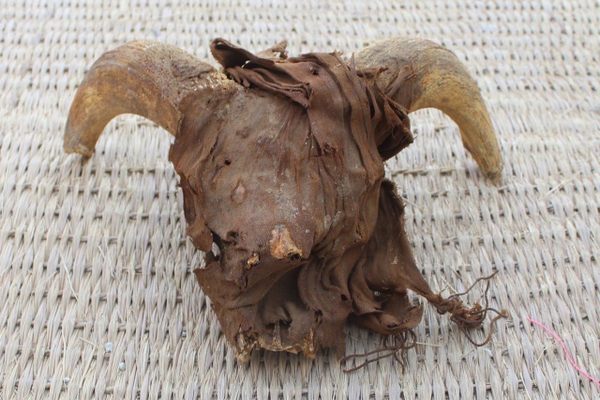Why Did Medieval Artists Give Elephants Trunks That Look Like Trumpets?
Maybe not just because they didn’t know what elephants looked like.

The animals in the image above are elephants. They were drawn sometime around the 13th or 14th century in a medieval bestiary, a type of book that described animals large and small, real and fantastic. But to a modern eye the line between the real and the imagined is often blurred. Unicorns and two-legged centaurs were listed alongside lizards, weasels, pelicans, and panthers, and in the stories these books told, griffins carried away oxen and dug for gold in mines, while dragons fought with elephants that looked as unreal as any mythical beast.
In England and France, these bestiaries were most popular during the Middle Ages, but they had their origins in the ancient Mediterranean, when scholars in Egypt drew from the works of Aristotle, Pliny, and their like to create the first of these books. Bestiaries were supposed to describe the natural world, but the world they depicted is often hard to recognize. Even the very real animals could be made into unrecognizable beasts, like the elephants above.
Elephants in medieval bestiaries came in all shapes and sizes, few of which resembled real-life elephants. They might have horse-like legs and tails and misshapen feet or look more like pigs. Sometimes their ears were missing; sometimes their trunk was so long it would drag on the ground. The trunks and the tusks were most often twisted into surprising shapes and angles: One very memorable elephant looked like a dog with the tusks of a boar and a strange, long nose.
Look at a series of these images, and sometimes patterns emerge. For instance, while the trunks of elephants rarely looked like they do in real life, they often looked like trumpets. Could that be a clue to these unusual images? Why did so many artists copy that detail, when so many other features were left the imagination?

One of the mysteries of the bestiary form is what the first one looked like. The tradition is usually traced back to the Physiologus, a book that no longer exists. It’s thought that it was written around the 2nd century A.D., in Alexandria, by a scholar working in Greek, and much of what’s known about it is derived from later translations into Latin. It would have contained the descriptions of a selection of animals, perhaps 50 or so, and relied on the standard works of natural history of the time, including Aristotle’s History of Animals and Pliny’s Natural History.
But the Physiologus did not follow the rules of scientific observation, as we understand them today. Its author described a world created by a Christian God, where the scientific and religious observations were not neatly divided. It was “a compilation of pseudo-science in which the fantastic descriptions of real and imaginary animals, birds, and even stones were used to illustrate points of Christian dogma and morals,” wrote Florence McCulloch in Mediaeval Latin and French Bestiaries, a foundational text in the modern study of medieval natural history. As Ann Payne, a curator at the British Library put it, the author’s “purpose was to analyze the habits of beast and to elicit from them what they were supposed to tell him about the ways of God, of Man and of the Devil.”

Elephants, for instance, starred in a story about sex. The bestiaries’ fascination with elephants’ sex lives had both a naturalist and a religious angle to it. Bestiary writers appeared to be genuinely trying to theorize about how elephants procreated: They were just so large and heavy! How did the male avoid crushing the female?
But the bestiaries’ accounts of elephants’ love life also focused, in more detail, on their relative chasteness. Elephants were said to have no desire to have sex, or to be slow to sexual arousal. In these stories, elephants had one mate and stayed true to that partner. To reproduce at all, the elephant couple would have to go east to the garden of Eden, where the female would pick the fruit of the mythical mandrake, a sort of human-plant hybrid, and offer it to the male elephant.
Were medieval people really meant to believe that’s how elephants mated? According to bestiary scholars, they were not as gullible as us modern, post-Renaissance people would like to believe. As McCulloch explained, back in 1962, the bestiaries’ audience understood these were didactic stories. They didn’t believe that elephants had to eat human-plant hybrids in order to do it.

In the 21st century, though, people are all too willing to believe that medieval artists and writers were doing their best to document natural history, using limited information. Images from bestiaries are often framed as efforts “based on hearsay” or “descriptions of travelers.” King Louis IX of France gifted King Henry III of England an elephant in 1255, and the elephant came to live at the Tower of London, which at the time was used as a castle and residence rather than a gloomy prison. It’s often said that after that, British artists were able to draw the elephant more naturalistically.
But the trunks portrayed as trumpets hint that this judgment isn’t quite right. There are plenty of written descriptions of the elephant’s trunk, and none of the ones I found describe it as “shaped like a trumpet.” Aristotle explained that the elephant’s trunk “is capable of being crooked or coiled at the tip, but not of flexing like a joint, for it is composed of gristle.” Hexameron of Ambrose, writing in the fourth century A.D., noted that an elephant has a hollow, “projecting trunk” that it uses to suck up huge quantities of water and pour them down its throat. One medieval writer said it is “like a snake, fortified with a wall of ivory.”
The only reference I could find connecting an elephant’s trunk to a trumpet was Aristotle’s note that though an elephant makes a sigh-like sound using its mouth, “if it employ the trunk as well, the sound produced is like that of a hoarse trumpet.”

There’s more evidence, too, that bestiary artists were making a choice when they drew elephants in these less-than-naturalistic ways. In her book Medieval Bestiaries: Text, Image, Ideology, Debra Hassig (now Debra Strickland, a senior lecturer at the University of Glasgow) details how the naturalism of elephant images in bestiaries has little relationship to the appearance of that very real elephant in the Tower of London.
“There are very naturalistic renderings of elephants in some of the earliest English manuscripts, and very non naturalistic examples in some of the later ones,” she wrote. “The degree of naturalism found in a given image must have been the result of the artist’s decision, even in the wake of direct observation of a live specimen … In the bestiaries, fidelity to living creatures was not necessarily the artist’s goal.” In other words, the bestiary artists were making choices, and they sometimes chose not to depict the elephant in the most naturalistic way possible. Instead, they followed a different set of guidelines, focused on the story the image might tell rather than its fidelity to what the eye might see.
Is it possible that the artists drew the elephants’ trunks as trumpets to symbolize the sound the trunk made—to communicate the sound as part of the image? If bestiary stories were meant to be allegorical, if the images are already telling a story, if they were making those choices on purpose, perhaps this detail is just one more part of that system. Medieval artists might not have been working with the exact same information that we have now, but that’s not why their drawings look strange to us. They were communicating facts and ideas using a language we no longer understand.












































Follow us on Twitter to get the latest on the world's hidden wonders.
Like us on Facebook to get the latest on the world's hidden wonders.
Follow us on Twitter Like us on Facebook